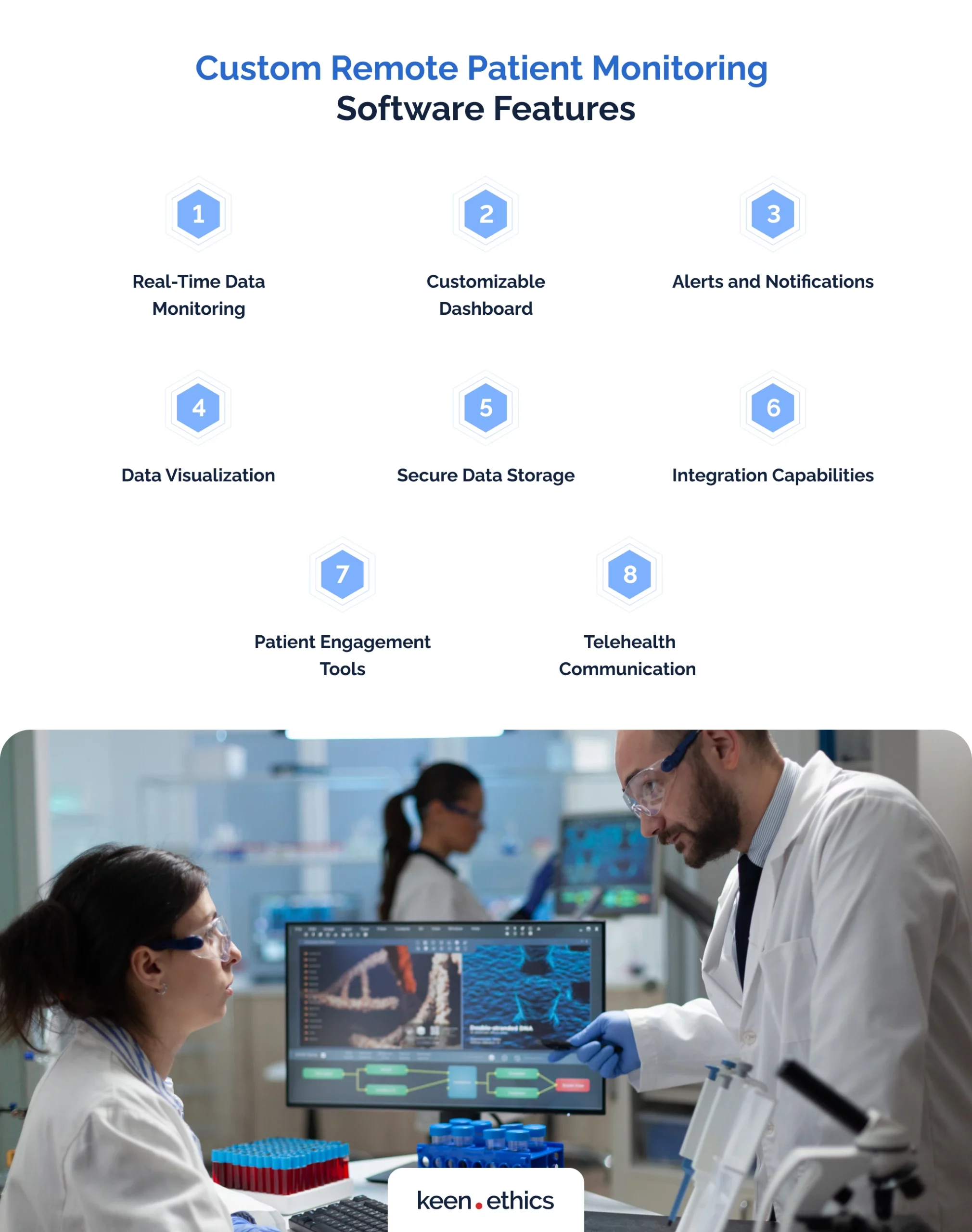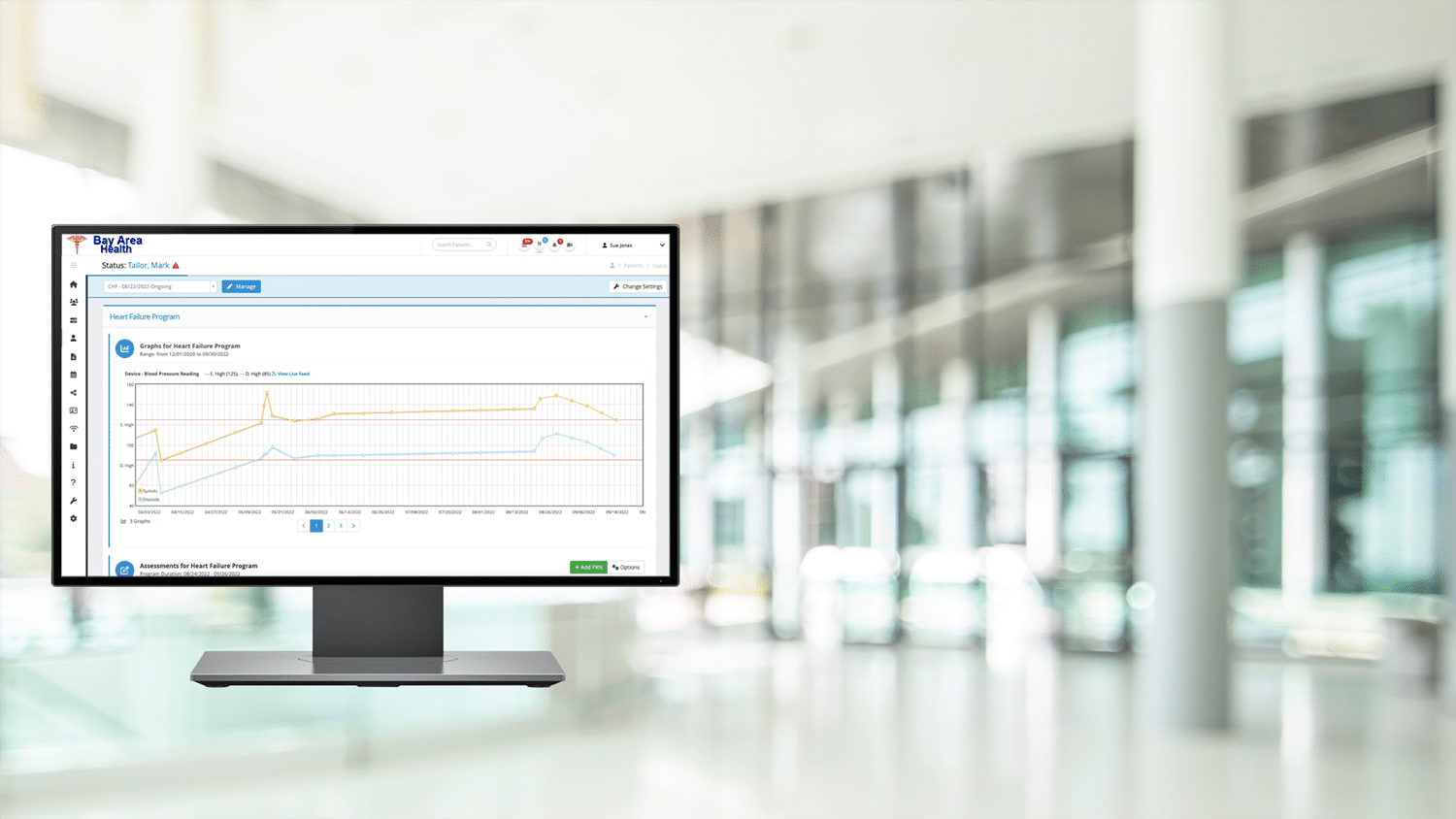Leading Remote Patient Monitoring Platform: Streamline Medical Care Workflow
Leading Remote Patient Monitoring Platform: Streamline Medical Care Workflow
Blog Article
The Future of Medical Care: Remote Patient Keeping An Eye On Streamlined
As healthcare remains to develop, one location that holds tremendous promise is remote client tracking. The principle of simplifying this process with technical advancements is reshaping the means treatment is supplied and received. With a focus on improving individual end results and improving health care shipment, remote surveillance is poised to transform the market. By checking out the benefits, technical technologies, and future fads in this area, we can obtain beneficial insights into the transformative potential of remote client tracking.
Benefits of Remote Individual Tracking
Remote person monitoring provides a multitude of benefits for both medical care companies and people alike. Furthermore, remote client surveillance enhances the general top quality of care by offering an extra alternative and thorough view of patients' health and wellness standing past conventional in-person sees.
Moreover, remote client tracking can cause better person outcomes and fulfillment. People can enjoy the convenience of getting care in the convenience of their very own homes while still recognizing that their wellness is being very closely kept an eye on. This can cause raised person engagement and adherence to treatment strategies, eventually resulting in better health and wellness results. Furthermore, remote surveillance can decrease the requirement for frequent healthcare facility sees, decreasing health care expenses for both individuals and suppliers. Generally, the advantages of remote patient monitoring are clear, making it a valuable device in contemporary healthcare delivery.
Modern Technology Driving Remote Tracking
In the world of contemporary healthcare, technical innovations play an essential role in driving the advancement and effectiveness of remote person tracking. The assimilation of ingenious technologies such as wearable tools, mobile applications, and cloud-based platforms has actually transformed the means doctor remotely take care of and monitor client health - remote patient monitoring platform. These innovations make it possible for continuous real-time surveillance of vital indications, drug adherence, and various other important wellness data, permitting timely interventions and individualized care plans
One secret modern technology driving remote monitoring is the Web of Points (IoT), which makes it possible for smooth connectivity between medical gadgets and medical care systems. IoT tools such as smartwatches and wireless sensors send and accumulate client information to central systems, facilitating remote tracking from anywhere in the world. Expert system (AI) and equipment learning algorithms additionally boost remote surveillance by assessing substantial amounts of patient data to spot patterns, anticipate health and wellness patterns, and alert health care providers to potential issues.
Influence On Healthcare Delivery
With the integration of advanced technologies driving remote patient monitoring, the influence on health care distribution is ending up being transformative and progressively profound. Remote patient surveillance permits health care suppliers to use even more positive and individualized like individuals, causing enhanced health end results and minimized health center admissions. By from another location tracking crucial indications, symptoms, and medicine adherence, health care professionals can interfere early, stopping problems and enhancing the total high quality of care.
Moreover, remote surveillance boosts access to health care services, specifically for individuals in underserved or rural locations. Patients can obtain constant surveillance and support from their homes, removing the requirement for constant in-person brows through. This not only conserves time and decreases prices for both people and healthcare centers but likewise minimizes the danger of direct exposure to infectious conditions, an essential factor to consider in the present medical care landscape.
Additionally, remote individual monitoring allows medical care suppliers to better prioritize and assign sources care based on real-time information. By recognizing high-risk clients and stepping in without delay, healthcare delivery ends up being a lot more efficient and reliable, inevitably leading to a more sustainable and patient-centered health care system.
Improving Patient Outcomes

Furthermore, RPM enables for positive monitoring of chronic problems, reducing the probability of severe worsenings and hospital readmissions. People take advantage of boosted comfort browse around here and comfort, as they can obtain treatment in their own homes while remaining connected to their health care providers. This continuous monitoring not just improves client satisfaction yet likewise promotes a sense of empowerment and involvement in their own health monitoring.
Future Trends in Remote Tracking
Accepting cutting-edge modern technologies in remote individual monitoring is forming the future landscape of healthcare distribution. The future patterns in remote monitoring are anticipated to transform the way health care is offered, making it extra effective and patient-centric. One substantial pattern is the increased use wearable tools and sensors this post to accumulate real-time data, making it possible for health care service providers to check individuals continuously without the requirement for frequent in-person sees. These devices can track crucial indicators, medicine adherence, and task levels, offering a detailed sight of the person's health and wellness status.

Furthermore, telehealth systems are becoming a lot more sophisticated, enabling for digital assessments, remote medical diagnosis, and remote patient keeping track of done in one incorporated system (remote patient monitoring platform). This alternative strategy to remote monitoring is improving medical care delivery, improving person satisfaction, and eventually, enhancing total quality of treatment
Conclusion
To conclude, remote person tracking offers many benefits in healthcare shipment, driven by innovations in technology. It has the prospective to boost client end results and reinvent the way healthcare is provided. Future fads in remote monitoring will remain to form the landscape of healthcare, providing opportunities for more customized and effective patient care.
Remote patient monitoring offers a multitude of benefits for both medical care suppliers and patients alike. Furthermore, remote individual tracking boosts the general top quality of care by offering a more alternative and detailed sight of individuals' wellness status beyond see it here traditional in-person visits.
Furthermore, remote individual monitoring can lead to better patient end results and contentment. Remote person monitoring allows health care companies to offer even more positive and individualized care to people, leading to boosted health and wellness outcomes and lowered healthcare facility admissions. Remote patient surveillance (RPM) plays a significant role in boosting individual results by offering continuous, real-time information that makes it possible for health care companies to step in quickly and adjust therapy plans as needed.
Report this page